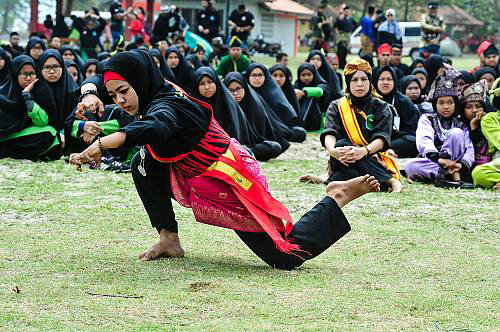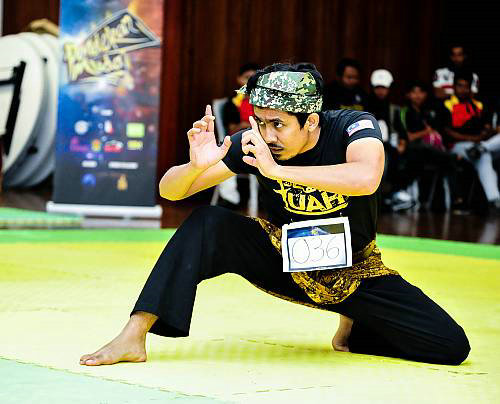Malay Silat
Inscribed in 2019 on the Representative List of the Intangible Cultural Heritage of Humanity

Silat is a combative art of self-defence and survival rooted in the Malay Archipelago. Traced back to the early days of the Langkasuka Kingdom, Silat has evolved into a fine practice of physical and spiritual training also encompassing traditional Malay attire, Silat musical instruments and customs. There are many styles of Silat, inspired by the movements of human anatomy, nature and animals. For example, Silat Harimau involves an aesthetic rhythmic motion imitating the art of self-defence and attack of the tiger. In Malaysia alone, there are more than 150 known Silat styles whose names derive from natural elements such as animals and plants. Originally, Malay Silat was practised by warriors but nowadays practitioners consist of masters, gurus, teachers and students, who are responsible for maintaining the practice.

Training sessions usually take place in the evening or at night in an open space such as a courtyard, led by the Master. A large number of practitioners have been trained and nurtured, and an increasing number of training centres have been established in various regions. With this accelerated dissemination, the practice has increasingly transcended its status as a martial art to become a performing art; consequently, it is now a popular sport for health and leisure.
Latest
- Live Broadcast Held by Cambodia Rural Road Project of the Belt and Road Overseas Engineering Science Camp
- Construction of China-Laos railroad heightens Chinese learning boom, Lao students grouped to Guangxi to study
- Opening Ceremony of Begonia Cultural Festival and Begonia Poetry Event Successfully Held
- Students from Indonesia arrive for study in China
Contact us
Address:ASEAN-China Centre, No. 43, Liangmaqiao Road, Chaoyang District, Beijing, China
Postcode: 100600
Tel: 86-10-65321660 ext 636
Fax: 86-10-85322527
Weibo: weibo.com/aseanchinacentre
